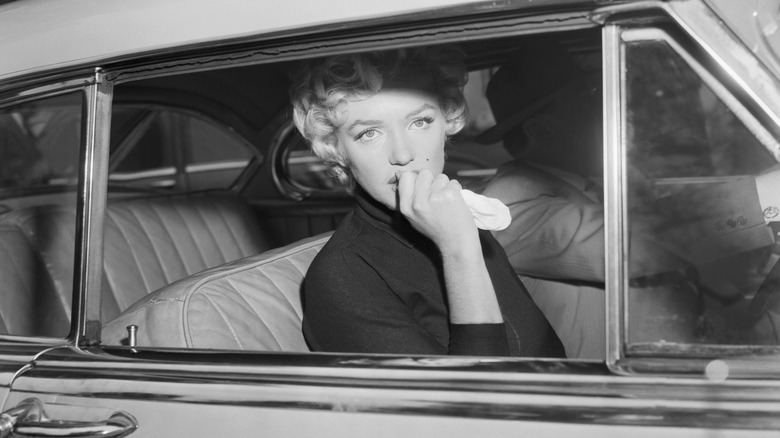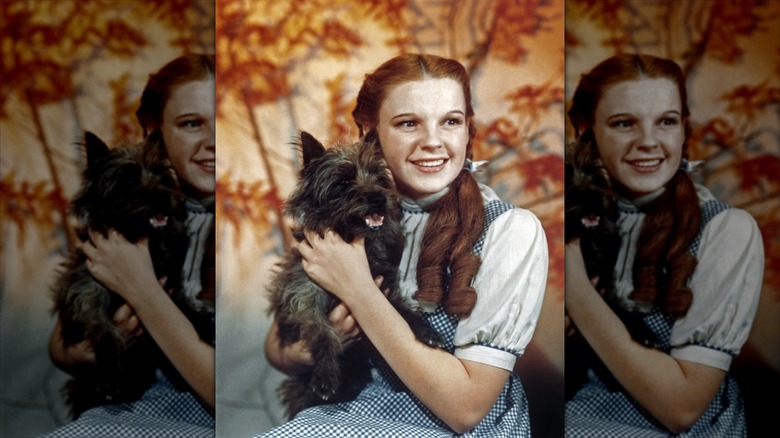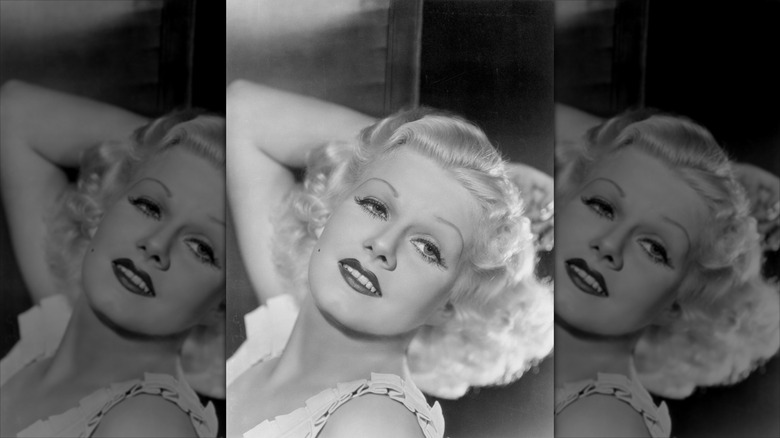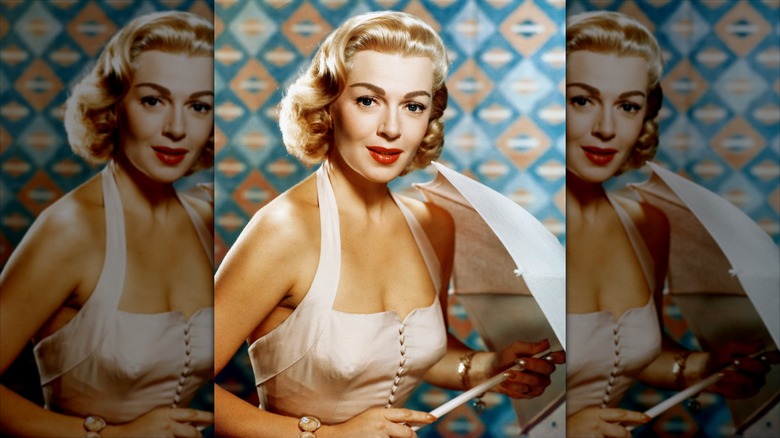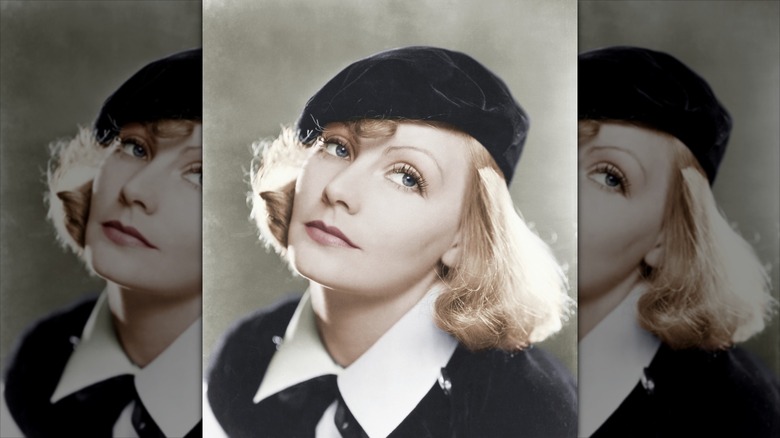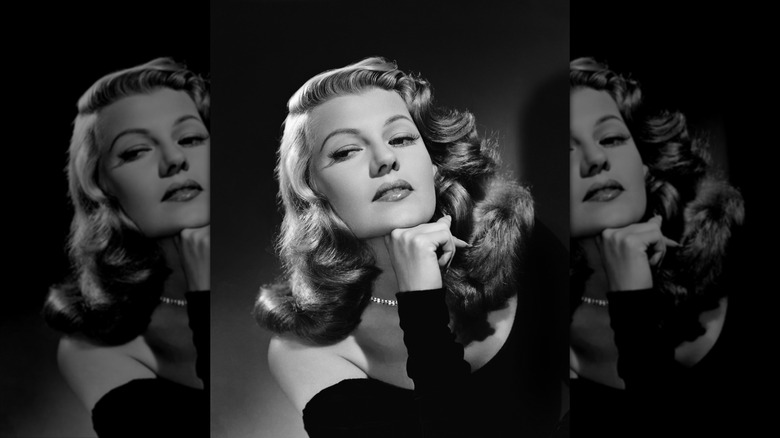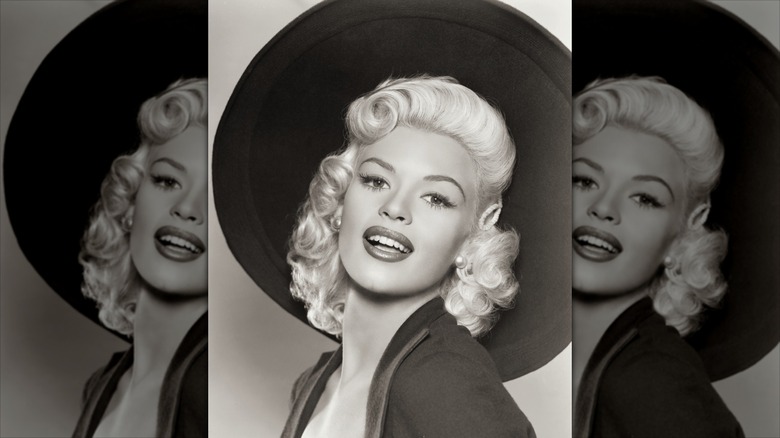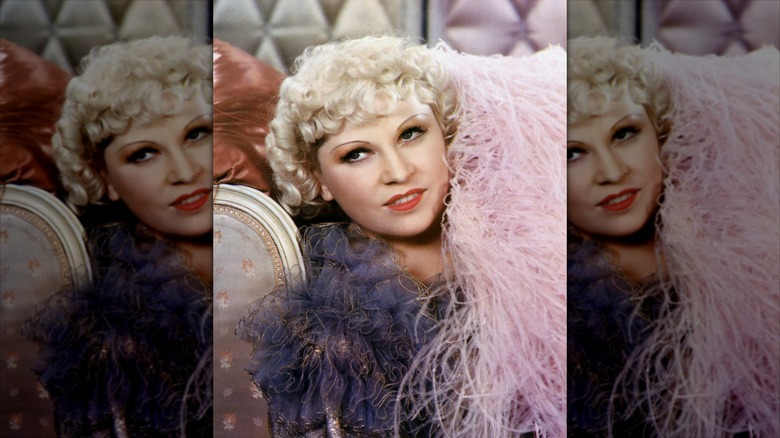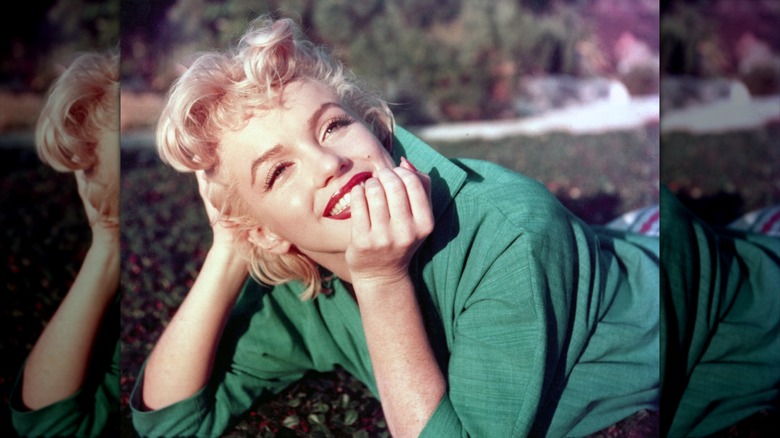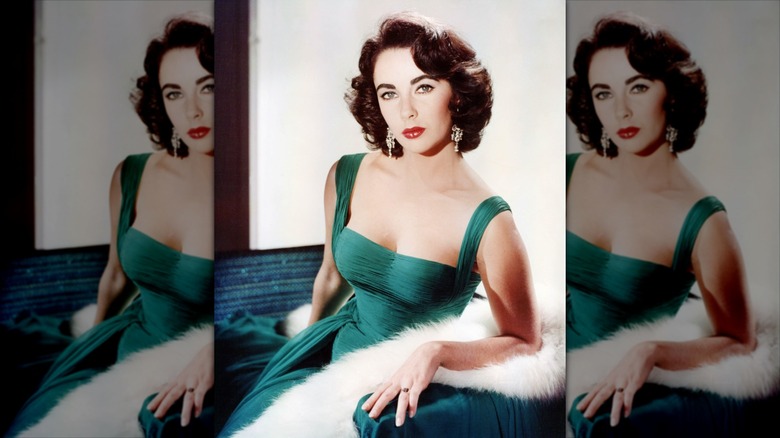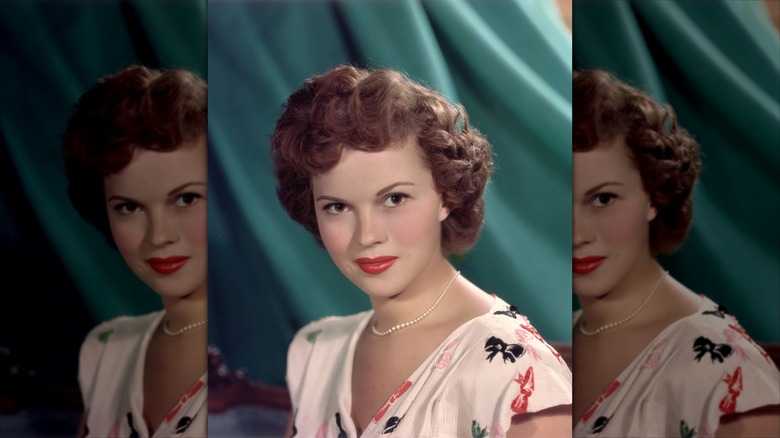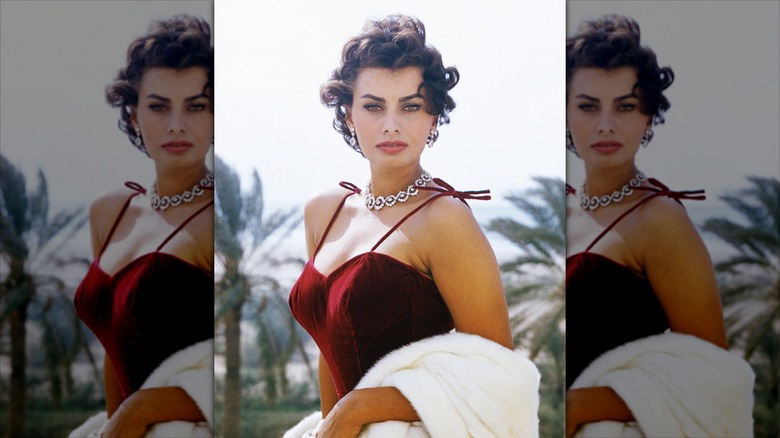The Most Tragic Details Of Old Hollywood Stars' Lives
The following article contains mentions of addiction, eating disorders, and sexual abuse.
When discussing Old Hollywood, most first bring up the glamour. It's an aesthetic many people — both famous and non-famous — still aspire to today. And while bits of Old Hollywood were glamorous, such as women walking the red carpet clad in silk and diamonds while men arrived at events dressed to the nines and driving in Aston Martins, it was all a veneer. Underneath that glamour were greedy and cruel studio executives happy to sacrifice the well-being of their stars if it meant a healthy bottom line, parents willing to use their vulnerable children for personal gain, and rats that took the form of all sorts of characters promising young women stardom.
What's worse, many men and women who became Old Hollywood stars were plenty familiar with sadness before they stepped foot on a studio lot. Many of them suffered heartbreak in their childhoods, and in looking for an escape, they stepped into a world that was often just as sinister. These are the most tragic details of the lives of Old Hollywood stars.
Judy Garland was treated terribly while filming one of her most iconic films
Judy Garland is one of Old Hollywood's most recognizable stars who rose to fame after starring in the classic film "The Wizard of Oz." While that film essentially cemented her place in Tinseltown, it also proved to be a dark chapter in Garland's tragic, real-life story. Despite being the star of the film, Garland was treated terribly by the studio. The actor was forced to wear a corset and strap her breasts down in an effort to make her look younger, and she was criticized for her weight and kept on a strict diet. Garland was also given barbiturates and amphetamines to cope with the grueling filming schedule, and although she had begun using the drugs prior to making "Oz," her repeated use led to a dependency that would carry on throughout the rest of her life.
The studio's poor treatment of the star didn't end with "The Wizard of Oz," and for the book "The Life and Times of Mickey Rooney," Garland shared with biographer Paul Donnelly what life was like working for MGM. "They had us [Mickey and Judy] working days and nights on end. They'd give us pills to keep us on our feet long after we were exhausted. Then they'd take us to the studio hospital and knock us out with sleeping pills," Garland said.
Joan Crawford had a troubled childhood
Though she's best known for inspiring the memoir and film "Mommie Dearest," there were plenty of other tragic details about Joan Crawford's life, and they came well before her daughter was accusing her of multiple forms of abuse. Crawford first experienced tragedy when she was just a little girl. While living in Texas with her parents and her sibling, Crawford's father left to take a job, but he never returned. While Crawford was likely too young to fully grasp the gravity of her father's sudden departure, she would later experience the devastating effects.
Crawford's mother didn't want her and her children to be more negatively impacted by her husband than they already were, so she moved her family to Oklahoma. It was there that she met her second husband, a man who caused irreparable damage. From the time she was just 11 years old, Crawford was sexually abused by her stepfather. The abuse went on for years, only stopping when Crawford's mother caught him red handed. Crawford's mother divorced her husband in response, but she harbored resentment toward her daughter, holding Crawford partially responsible for her stepfather's actions. Crawford and her mother had a fractured relationship for the rest of her mother's life because of her stepfather's abuse.
Jean Harlow's husband died by suicide
Jean Harlow's life was short, but it was full of tragedy. At just 16 years old, not long after her own parents divorced, Harlow ran away from home with a man (who was already an adult) she married just months later. Shortly after moving to Beverly Hills, Harlow started pursuing an acting career. Her husband didn't take kindly to it, and the two divorced. Harlow found loads of success as an actor, but that proved to be about the only good thing in her life.
In her early 20s, Harlow met another man named Paul Bern, an executive at MGM. The two fell in love and got married, but just two months after exchanging vows, Bern died by suicide. Harlow kept looking for love, finding it in a cinematographer who accounted for her third marriage. The two divorced about a year later. Perhaps most tragically, just before she was set to get married a fourth time, Harlow died from uremic poisoning. She was only 26 years old.
Lana Turner's abusive boyfriend was killed by her teenage daughter
In Old Hollywood, Lana Turner seemed to be living an enviable life. She was a famous actor, dated men like Frank Sinatra and Artie Shaw (and reportedly Clark Gable), and she was beautiful and wealthy. But life wasn't always so glamorous for Turner, and it took an especially tragic turn in 1958. At the time, Turner was dating Johnny Stompanato, a member of a Los Angeles crime family. Stompanato was physically abusive toward Turner throughout their relationship, and Turner's daughter, Cheryl Crane, who was 14 at the time, bore witness to much of the mistreatment.
In early April of that year, Turner and Stompanato reportedly got into an argument that turned violent. According to police reports, Crane, afraid her mother was going to die, brought a knife into the room where the adults were arguing. Stompanato apparently walked into the knife and died. His death was ruled a justifiable homicide, but Crane spent significant time after the incident receiving psychiatric care. That night also had a lasting impact on Crane and Turner's relationship. "I think that their relationship ebbed and flowed, like many relationships between parents and their children. Although this sensational story was kind of hanging around their necks, so to speak," Casey Sherman, author of "A Murder in Hollywood: The Untold Story of Tinseltown's Most Shocking Crime" told People of the star and her daughter.
Greta Garbo was body shamed by studio executives
Greta Garbo was a Swedish sensation who brought her talent to the United States. While she popped on screen, not everyone here was so welcoming. As silent-film expert Pamela Hutchinson told The Guardian, "Louis B Mayer hired her for MGM in 1925, when she was already a success in Europe, with the caveat that 'In America, we don't like fat women.'" In response, "Garbo ate nothing but spinach for three weeks and then dieted, rigorously, for the rest of her Hollywood career."
The comments about Garbo's weight and her unique diet have been added to discourse about physical expectations of women in Hollywood for decades, but according to Lois W. Banner, author of "Ideal Beauty: The Life and Times of Greta Garbo," Garbo was more deeply affected. As Banner told Closer (via Yahoo Entertainment), the Old Hollywood star had an eating disorder. "She chain-smoked from the age of 17 and suffered from anorexia nervosa. Hollywood stars were required to be thin, but Garbo had a broad, muscular body. She had several breakdowns when she lost too much weight," Banner said. The actor doesn't appear to have ever commented on this publicly, but it seems to have been another tragic detail of Garbo's life.
Rita Hayworth was diagnosed with Alzheimer's disease near the end of her life
Rita Hayworth was the epitome of Old Hollywood glamour. Considered to be one of the most beautiful women in Hollywood at the time, Hayworth made a career in entertainment out of her looks and talent. Tragically, though, the end of Hayworth's life wasn't nearly as glitzy as it was once. Hayworth's youngest daughter, Princess Yasmin Aga Khan, noticed that things were off with her mother in the 1970s. Hayworth was suffering memory loss and mood swings, among other symptoms, and Khan didn't know what was causing the issues. They were blamed on alcoholism, but in the early 1980s, Hayworth was diagnosed with Alzheimer's disease.
While there's still a lot about Alzheimer's that isn't well understood, the disease was even more misunderstood at the time of Hayworth's diagnosis, making living with it that much more challenging. Prior to Hayworth's diagnosis, Khan was living in New York City while Hayworth was in Los Angeles, and the distance made caring for Hayworth difficult. "Her doctors weren't in communication with me and her lawyers had to handle affairs on her behalf. I really felt helpless. It was very upsetting," Khan told the Alzheimer's Association. Eventually, Khan was granted conservatorship over Hayworth and moved her mother to New York, but Hayworth remained at war with her body and mind until her death in 1987.
Jayne Mansfield's father died when she was a child
Jayne Mansfield experienced plenty of tragedy in her short life, too. When she was just three years old, Mansfield lost her father to a heart attack. Mansfield's life was forever changed by the tragedy. "Something went out of my life ... My earliest memories are the best. I always try to remember the good times when Daddy was alive," Mansfield once said of the loss of her father, per Biography. The rest of Mansfield's childhood was relatively happy, but she met more tragedy as she aged.
When Mansfield was still in high school, she married her first husband. The two moved to Los Angeles where Mansfield pursued a career in the entertainment industry. It was difficult at first, but she eventually found success. Her personal life wasn't quite as successful, though. After Mansfield and her first husband divorced, she got married to two more men, the second of whom was reportedly abusive. Shortly after separating from her third husband, Mansfield died in a horrific car accident at just 34 years old.
Mae West spent time in jail because of one of her performances
Mae West was an old Old Hollywood icon. Born in the late 1800s, West came up in Tinseltown at a unique time, and the social politics in the United States were at odds with her persona. West was a blond bombshell who wrote and performed works that were sensual and provocative. She was proud of her work, but not everyone else was. In 1927, before her screen career began, West wrote and starred in the Broadway play called "Sex." She played a sex worker in the production, and audiences came in droves to see it.
The play drew plenty of criticism, though. Critics weren't fond of it, and the play resulted in West being arrested. At her court hearing, West was sentenced to 10 days in a work camp, the charges being obscenity and corrupting the morals of youth. The budding actor made the best of the stint, though. She was released two days early on good behavior, and she parlayed the publicity into a successful career in film.
Marilyn Monroe's childhood was shaped by her mother's mental illness
Clearly, many Old Hollywood stars lived tragic lives, but few have been as publicized as Marilyn Monroe's. Like many of her contemporaries, Monroe had a tragic childhood, serving as a dark omen of what was to come in her adulthood. Monroe grew up without a father, and she spent the first several years of her life living in foster care. Monroe regularly spent time with her mother while living with her foster family, and then at age seven she moved out of foster care to live with her mother. The living arrangement was precarious, though; Monroe's mother struggled with mental illness, the symptoms of which had been evident for years.
Her mother's mental illness had an enormous impact on Monroe, straining their relationship and making life at home difficult. While Monroe was still a child, her mother was diagnosed with paranoid schizophrenia and was hospitalized. Monroe spent the next years of her life bouncing between foster homes and an orphanage, not finding relative stability again until she was a teenager. "I was never used to being happy, so that wasn't something I ever took for granted. You see, I was brought up differently from the average American child because the average child is brought up expecting to be happy," Monroe once said in a Life magazine interview, per The Guardian.
Elizabeth Taylor lost one of her husbands in a plane crash
If Elizabeth Taylor is known for one thing, it's that she had seven husbands. Though a fantastic actor — she won two Oscars throughout her career — Taylor's personal life always proved far more interesting to the public. What's more interesting, though, is that she might not have been the subject of every tabloid in the '60s and '70s if one tragic detail of Taylor's life hadn't happened. In 1958, Mike Todd, Taylor's third husband, whom she later described as her true love, died in a plane crash.
Todd's death rocked Taylor. "I honestly didn't think I would survive and didn't much care if I did not," Taylor said of the accident, according to Closer. To cope with the pain, Taylor sought solace in her and Todd's friend Eddie Fisher. At the time, Fisher was married to Debbie Reynolds, also a friend of Taylor's, and Taylor and Fisher began an affair that eventually broke up Fisher and Reynolds' marriage. Taylor went on to marry Fisher, though the marriage didn't last, and she got married another four times after that (with two of the marriages being to the same man, Richard Burton). Had Todd not died so early in their marriage, Taylor's life wouldn't have been the same.
Shirley Temple lost much of her fortune due to her father's poor management
Shirley Temple got her start in Hollywood young. Before the age of 10, she had already starred in over 40 films, and the studio loved her. They paid her $10,000 per week at the height of her popularity, and they threw her a birthday party each year. It was good to be Temple. And with those earnings, especially at that time, a year of work was enough to set up Temple for the rest of her life, ensuring that, with wise financial decisions, she would always be taken care of.
Sadly, that wasn't the case. When Temple was 22 years old, she checked her bank account to find that she only had $40,000 to her name. While not a bad amount, per se, it was far less than what should've been there considering how much she had made as a kid. As John Kasson, author of "The Little Girl Who Fought the Great Depression: Shirley Temple and 1930s America" told Closer (via Yahoo Entertainment), "Ninety-seven cents of every dollar she made was gone." Apparently it was Temple's father's fault. He had been responsible for managing her money, and his poor decisions resulted in major loss. "No doubt they also bought a bigger house and used it on family expenses. But Shirley didn't blame him. She thought he was badly advised," Kasson said.
Sophia Loren grew up in extreme poverty
One of the most famous Italian actors to ever live, Sophia Loren was the picture of glamour in Old Hollywood, but it took her years to procure that life. Born in Italy to a mother out of wedlock, Loren grew up in abject poverty. "Hunger was the major theme of my childhood. My mother was begging for food for us. She'd bring us back a potato, a fistful of rice," Loren wrote in her memoir "Yesterday, Today, Tomorrow: My Life" (via The Irish Examiner).
Loren also had a difficult relationship with her parents. Her father didn't claim her at birth, and her mother, who had wanted to be a star herself, had her own struggles to contend with as a single mother of two. "My father was absent, and my mother was too blonde, too tall, too lively, and above all, unmarried. Her eccentric, excessive beauty embarrassed me," Loren wrote.
If you or anyone you know needs help with addiction issues, have been the victim of sexual assault, needs help with an eating disorder, or is dealing with domestic abuse, contact the relevant resources below:
- The Substance Abuse and Mental Health Services Administration website or contact SAMHSA's National Helpline at 1-800-662-HELP (4357).
- The Rape, Abuse & Incest National Network website or contact RAINN's National Helpline at 1-800-656-HOPE (4673).
- Call or text 988 or chat 988lifeline.org
- The National Eating Disorders Association website or contact NEDA's Live Helpline at 1-800-931-2237. You can also receive 24/7 Crisis Support via text (send NEDA to 741-741).
- The National Domestic Violence Hotline at 1−800−799−7233. You can also find more information, resources, and support at their website.
